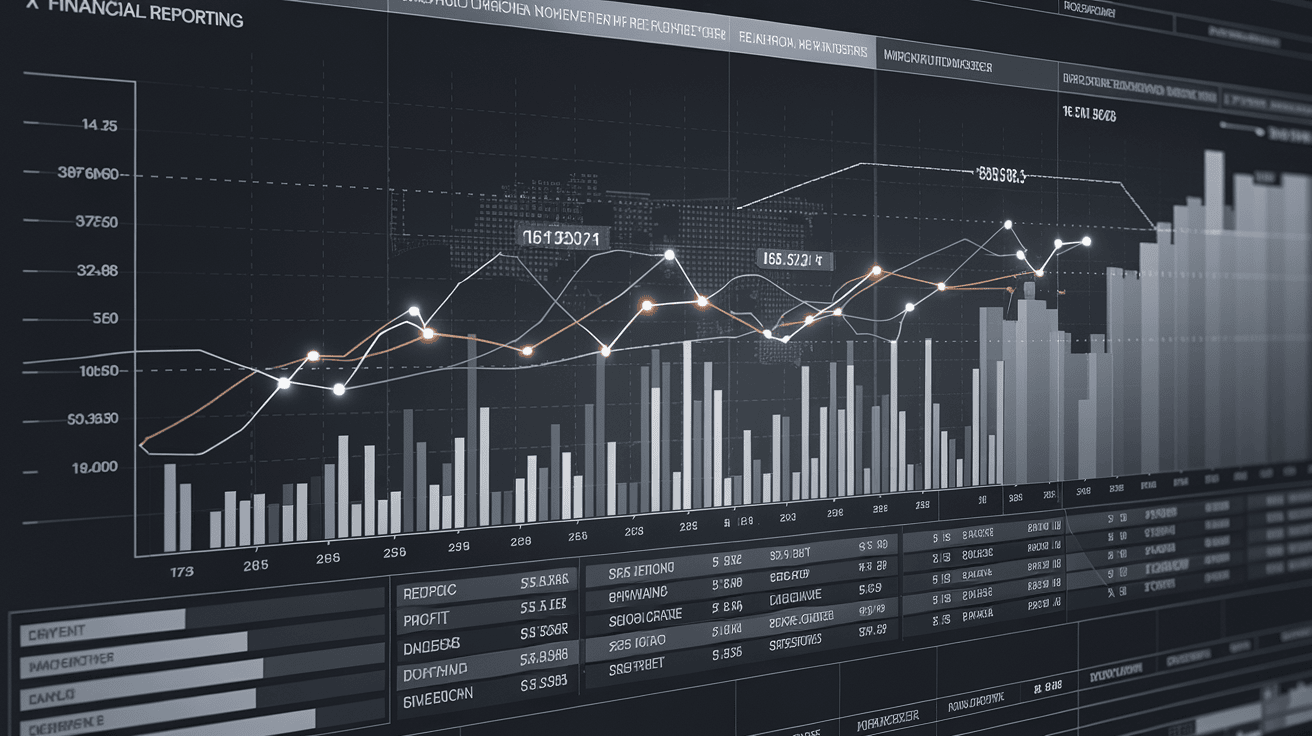Advanced Analytics for Regulatory Compliance in Banking

Introduction
In the fast-evolving landscape of financial technology (FinTech), regulatory compliance is a cornerstone for maintaining stability, trust, and legal adherence in banking. The financial sector faces an ever-increasing burden of compliance due to evolving global regulations such as Basel III, GDPR, Dodd-Frank Act, AML (Anti-Money Laundering) directives, and the Bank Secrecy Act (BSA). Banks and financial institutions are now leveraging advanced analytics, artificial intelligence (AI), and machine learning (ML) to ensure compliance while reducing operational risks and avoiding hefty penalties.
With the surge in digital transactions, real-time monitoring, and the rising threats of financial crimes, advanced analytics has become a game-changer in compliance management. This article explores how advanced analytics tools help banks meet regulatory requirements, avoid penalties, enhance efficiency, and streamline risk management.
Understanding Advanced Analytics in Banking
Advanced analytics encompasses a broad range of data-driven technologies, including predictive analytics, machine learning, natural language processing (NLP), big data analytics, and automation. These technologies empower financial institutions to detect anomalies, automate reporting, and improve risk assessments in real-time, thereby reinforcing compliance frameworks.
Key Components of Advanced Analytics in Compliance
- Predictive Analytics – Helps in forecasting potential compliance violations and fraudulent activities.
- AI and Machine Learning – Enhances accuracy in transaction monitoring and reduces false positives.
- Big Data Analytics – Processes vast amounts of structured and unstructured data for regulatory reporting.
- Natural Language Processing (NLP) – Assists in analyzing regulatory texts and automating document review.
- Robotic Process Automation (RPA) – Streamlines routine compliance tasks like KYC (Know Your Customer) verification.
- Blockchain and Smart Contracts – Improves audit trails and transparency in financial transactions.
How Advanced Analytics Aids Regulatory Compliance
1. Anti-Money Laundering (AML) and Fraud Detection
Money laundering and fraudulent activities are growing concerns for regulators worldwide. Advanced analytics tools enable real-time anomaly detection, pattern recognition, and behavioral analytics to flag suspicious transactions. AI-driven models are highly effective in identifying unusual transaction behaviors and ensuring compliance with AML directives.
Case Study: HSBC and AI-driven AML Compliance
HSBC, a global banking leader, implemented AI-powered AML compliance models to improve the accuracy of suspicious activity monitoring. Using machine learning, HSBC significantly reduced false positives by 20% and increased fraud detection rates, improving overall compliance effectiveness.
2. Know Your Customer (KYC) and Customer Due Diligence (CDD)
Regulatory authorities mandate banks to conduct thorough KYC and CDD procedures to mitigate financial crimes. Advanced analytics automates identity verification, enhances risk assessment, and streamlines onboarding processes.
Example: JPMorgan Chase and AI-driven KYC
JPMorgan Chase leverages AI-driven customer risk assessment tools that analyze thousands of data points from public and private sources. This has helped the bank reduce KYC processing time by 40%, improving efficiency and compliance.
3. Regulatory Reporting and Audit Automation
Banks must submit timely regulatory reports to authorities, which is often a complex and labor-intensive process. Advanced analytics solutions automate regulatory reporting, improve accuracy, and ensure timely submission.
Case Study: Citibank’s Regulatory Reporting Automation
Citibank implemented big data-driven regulatory compliance solutions that helped reduce reporting errors by 35% and improved audit efficiency by leveraging AI-based reporting frameworks.
4. Risk Management and Stress Testing
Financial institutions must conduct stress tests and scenario analysis to comply with capital adequacy requirements like Basel III. Advanced analytics models simulate potential market shocks and financial downturns, allowing banks to adjust risk exposure accordingly.
Example: Wells Fargo’s Risk Analytics Framework
Wells Fargo utilizes advanced risk analytics tools to forecast credit risk, assess market volatility, and optimize capital reserves to meet regulatory requirements.
5. Real-Time Transaction Monitoring and Behavioral Analytics
With millions of transactions occurring daily, traditional compliance methods fail to provide real-time insights. AI-powered real-time transaction monitoring systems identify irregular patterns and flag non-compliant activities instantaneously.
Example: Mastercard’s AI-based Fraud Detection System
Mastercard employs deep learning and behavioral analytics to detect fraudulent activities across its network. This reduces false alerts by 30% and enhances compliance efficiency.
Challenges in Implementing Advanced Analytics for Compliance
While advanced analytics offers transformative potential, banks encounter several challenges:
- Data Privacy and Security – Striking a balance between compliance automation and data privacy (GDPR compliance).
- Regulatory Uncertainty – Frequent regulatory updates require continuous adaptation of analytical models.
- Integration Complexity – Legacy banking systems often lack compatibility with AI-driven compliance solutions.
- High Implementation Costs – Advanced analytics solutions require significant investment in infrastructure and expertise.
- False Positives in AI Models – Reducing false alarms while maintaining high fraud detection rates remains a challenge.
Emerging Trends Shaping Regulatory Compliance in Banking
- AI-driven Explainable Compliance (XAI) – Enhances transparency and accountability in compliance models.
- Cloud-based Compliance Solutions – Increases agility and scalability for financial institutions.
- Regulatory Technology (RegTech) Adoption – Automates compliance workflows and reduces manual intervention.
- Blockchain for Regulatory Audits – Provides immutable records for audit trails and enhances transparency.
- Quantum Computing for Risk Analysis – A future technology to accelerate compliance risk assessments.
Expert Recommendations for Banks Adopting Advanced Analytics
- Invest in AI and Machine Learning – Leverage AI-driven solutions for real-time fraud detection and risk assessment.
- Adopt a Unified Compliance Framework – Integrate compliance across multiple regulatory jurisdictions.
- Enhance Data Governance Policies – Ensure secure and ethical use of AI-driven analytics tools.
- Collaborate with RegTech Firms – Utilize specialized regulatory technology providers for compliance automation.
- Train Compliance Teams on AI & Big Data – Upskill employees to work alongside AI-powered compliance tools.
Future of Advanced Analytics in Regulatory Compliance
With increasing regulatory scrutiny and financial crime risks, banks will continue to invest in AI-driven compliance frameworks. The integration of blockchain, quantum computing, and cloud-based RegTech solutions will redefine compliance management. In the coming years, we can expect autonomous regulatory compliance systems capable of self-learning and adapting to dynamic regulations, reducing the compliance burden on financial institutions.
Conclusion
Advanced analytics is revolutionizing regulatory compliance in banking, enabling financial institutions to proactively detect risks, enhance efficiency, and reduce compliance costs. As banks continue to embrace AI-driven compliance solutions, they must also prioritize data privacy, ethical AI use, and adaptability to regulatory changes. Financial institutions that successfully implement advanced analytics will gain a competitive edge by ensuring robust compliance frameworks while minimizing operational risks.
#AdvancedAnalytics #BankingCompliance #FinTech #RegTech #AIinBanking #AML #FraudDetection #RiskManagement #KYC #RegulatoryCompliance #

Introduction The rapid growth of digital banking, financial technology (FinTech), and data-driven decision-making has created a pressing need for scalable…

Introduction In the era of big data and financial technology (FinTech), financial institutions generate vast amounts of complex data daily….